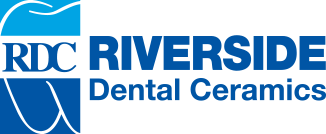For clinicians seeking proven restorative materials and smooth, efficient crown delivery, Riverside Dental Ceramics utilizes cutting-edge digital fabrication techniques to produce IPS e.max® restorations that seat with ease and satisfy your patients’ esthetic expectations. IPS e.max can be cemented with low-expanding glass ionomer cements or bonded with resin cements when indicated.
PRODUCT DETAILS
Indications
IPS e.max is indicated for single crowns and 3-unit bridges. Prescribe IPS e.max CAD for single anterior or posterior single-unit crowns. Prescribe IPS e.max Press for 3-unit bridges having only one pontic, with the second bicuspid as the most distal abutment. Veneers can also be indicated and are recommended when combining with adjacent IPS e.max crowns or bridges, provided ample reduction is achieved.
Benefits for the Patient
- Highly esthetic all-ceramic material for bridges and crowns.
- IPS e.max lithium disilicate is a reinforced-glass framework material with a fluorapatite layering ceramic that mimics the vitality of natural dentition.
- The lost wax technique of pressed ceramics and CAD/CAM milling both offer optimal fit.
- The nano-fluorapatite ceramic material wears similar to natural tooth enamel.
- Non-metal substructure eliminates the possibility of allergic reactions to metal, and low thermal conductivity reduces sensitivity to hot and cold.
- Excellent soft tissue response and biocompatibility.
Prep Requirements
- Anterior full-coverage crowns require a chamfer or shoulder margin. A circular shoulder is prepared with rounded inner edges or a chamfer at an angle of 10-30 degrees: the width of the shoulder/chamfer is approximately. 1 mm. Facial reduction is 1.5-2.0 mm; 1.0-1.5 mm lingual contact clearance. Incisal reduction is 1.5-2.0 mm with rounded internal line angles, and an incisal edge at least 1 mm wide to permit optimum milling of the incisal edge during CAD/CAM processing.
- Posterior full-coverage crown requires a chamfer or shoulder margin. A circular shoulder is prepared with rounded inner edges or a chamfer at an angle of 10-30 degrees: the width of the shoulder/chamfer is approximately. 1 mm. Occlusal reduction is 1.5-2.0 mm: axial reduction (buccal, lingual and interproximal) is 1.5 mm with rounded internal line angles.
Recommended Cementation
For greatest strength, and where preparation allows for dry field (supra-gingival margins), it is recommended to use adhesive bonding, such as VarioLink II (Ivoclar Vivadent) or similar dual cure materials (Insure, Cosmedent; Nexus, Kerr; Choice, Bisco, Inc.; Lute-It, Pentron). For areas subgingival, or when a dry field cannot be achieved, Ivoclar Vivadent recommends a hybrid glass ionomer cement system with less than 0.5% expansion. (NOTE: Resin-reinforced glass ionomers (Advance, Vitremer) are not indicated for any all-ceramic restoration.) Below is a list of recommended resin cements:
- Vivaglass (Ivoclar Vivadent)
- GC Fuji (GC America)
- Ketec Cem (3M ESPE)
- Panavia F (J. Morita)
- C&B Metabond
- Variolink (Ivoclar Vivadent)
ADA Codes
- D6519 Inlay/Onlay – Porcelain Ceramic
- D2740 Crown – Porcelain/Ceramic Substrate
- D2783 Crown – ¾ Porcelain Ceramic (Does not include veneers)
- D6245 Pontic – Porcelain/Ceramic
- D6740 Abutment Crown – Porcelain/Ceramic

